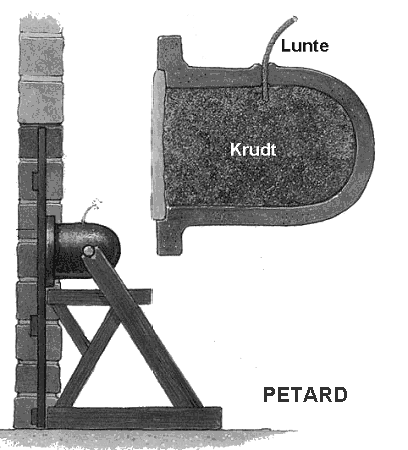16th Century Shaped Charge, The Petard,Derived from the from the French word “pet” and Latin word “p
16th Century Shaped Charge, The Petard,Derived from the from the French word “pet” and Latin word “peditum” meaning to break wind, the petard did much more than expel intestinal gas. It was an early shaped charge that was used to blow down big doors, gates, or palisades when laying siege to a fortification. The bomb usually consisted of a bell or cone shaped metal device filled with black powder. A small hole in the back allowed for the insertion of a fuse to detonate the bomb. By that time engineers had developed all kinds of explosives, what was special about the petard was that its bell shaped design focused the force of the blast in a frontward direction at a single point. This made it easier to blow a hole into a wall or blow a gate off of its hinges. The job of placing a petard fell to the petard makers assistant. It was definitely not an easy task, as a petardier would have been fired upon by crossbowman and musketeers while attempting to correctly mount an explosive. It was not uncommon for a petardier to be killed by his own device. In Hamlet, Shakespeare uses the phrase “hoist with his own petard”, as a proverbial phrase meaning to be destroyed by ones own devices. -- source link
#firearms#history#explosives#castles#forts#bombs#war#battle#weapons#16thcentury#1500s

